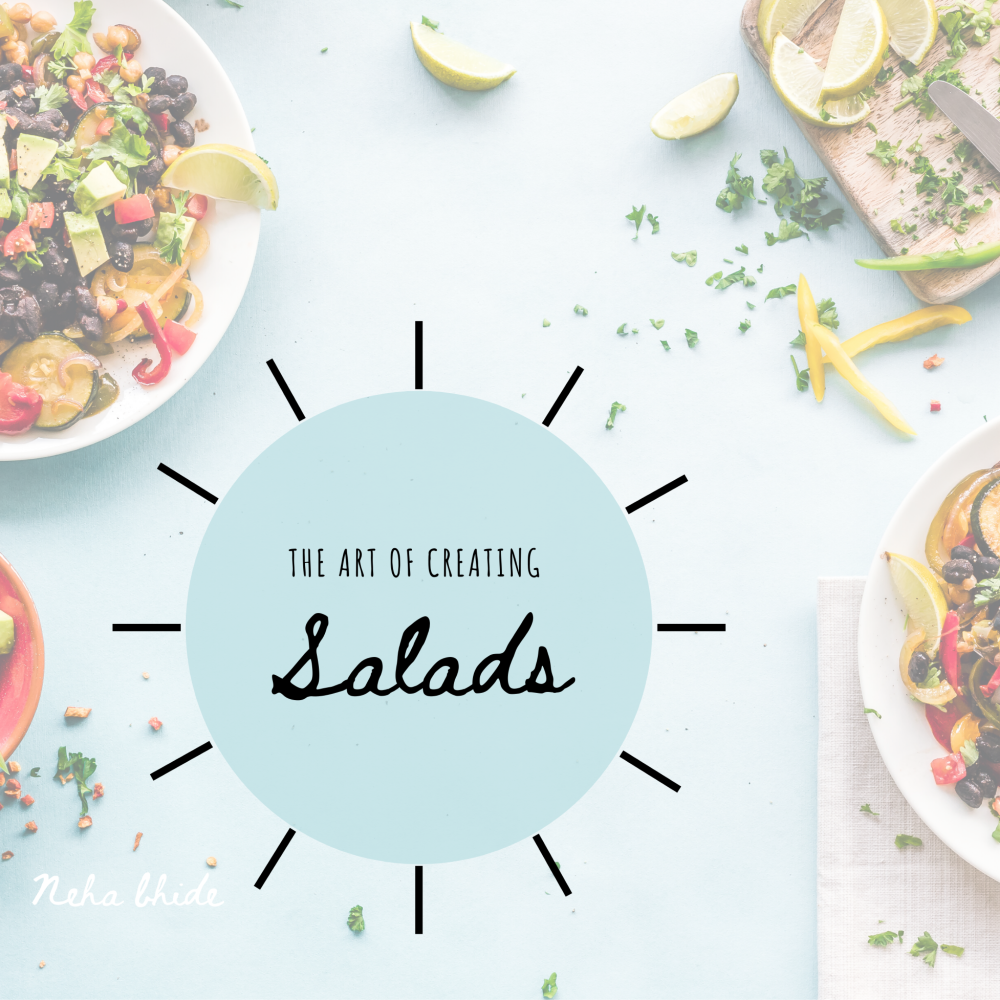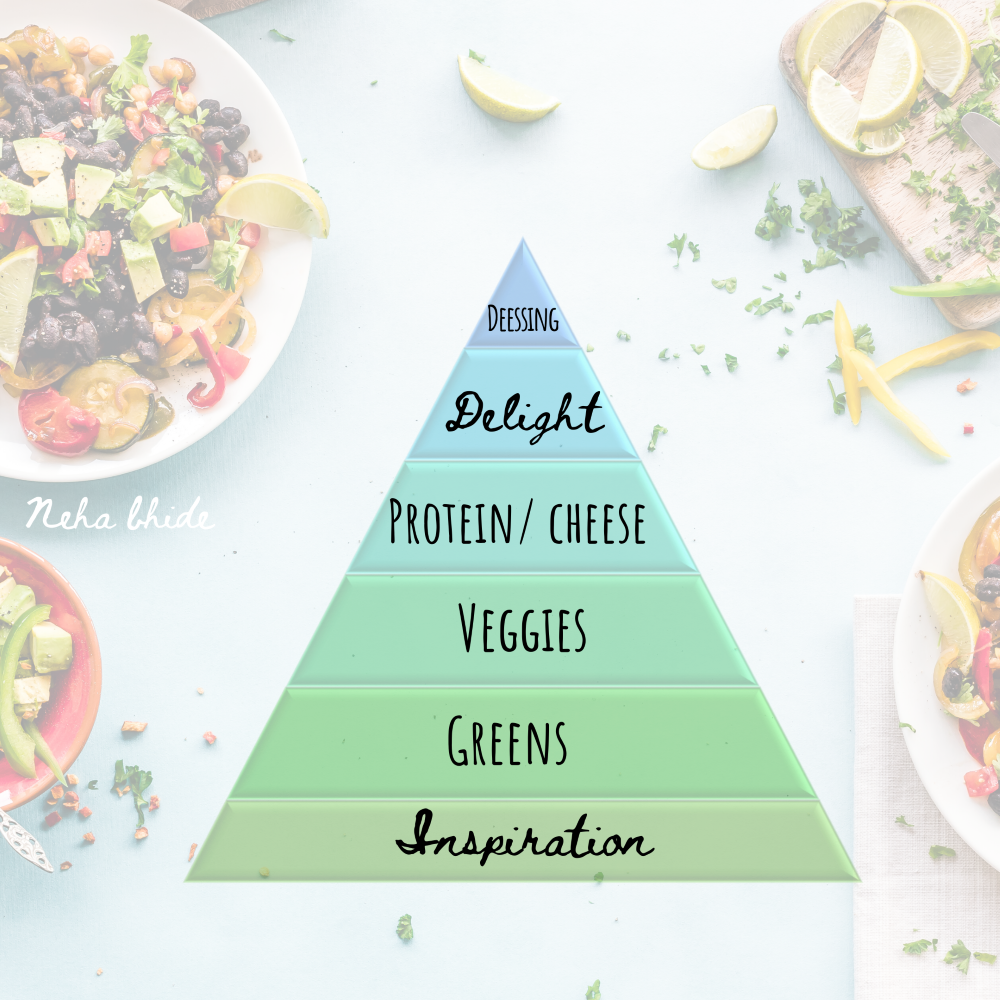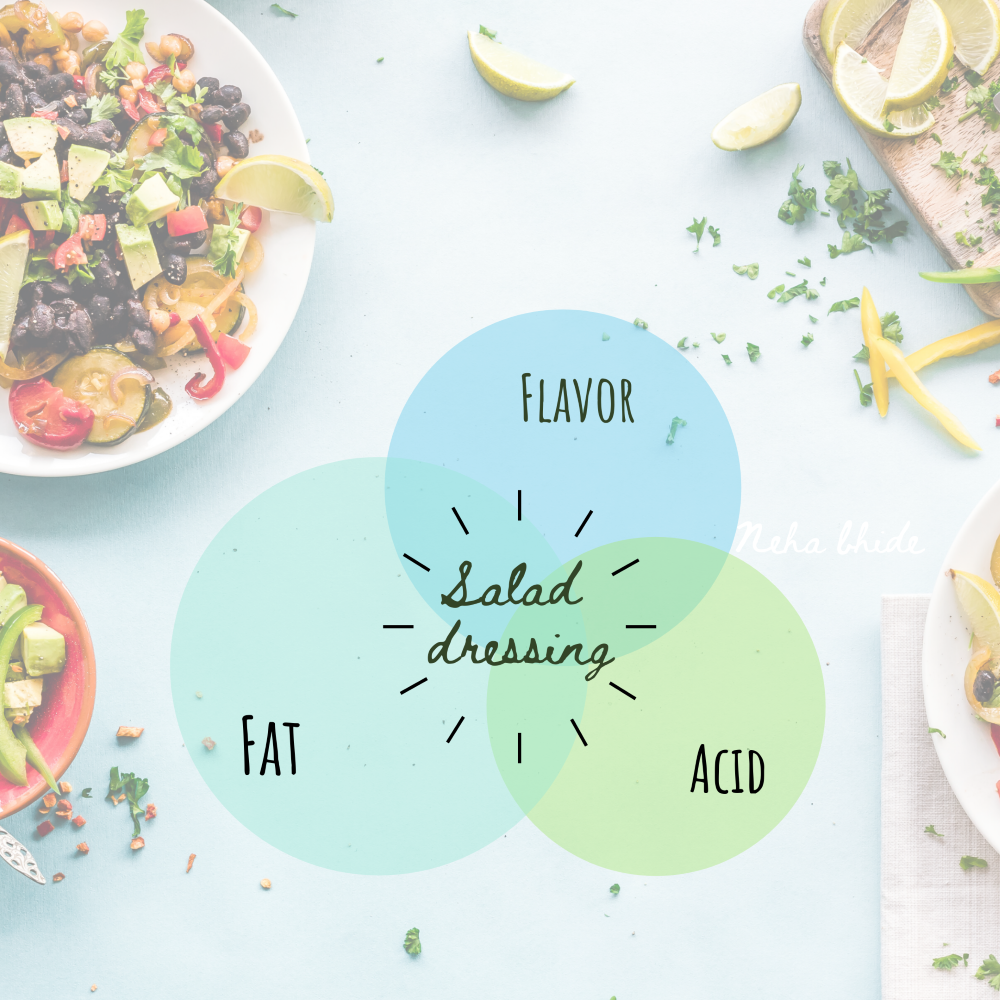The Art of Creating Salads

Your easy guide to coming up with unique, healthy and delicious salad recipes
Everyone wants to eat more salads and incorporate greens and raw veggies in their diets, but most of us are intimidated by the idea of it. However, the fact is they are incredibly simple to make, its almost like cheating on cooking (and making the opposite of a cheat meal, but not any less tasty!)
I don’t want to just write recipes for you to follow and make salads with. I want to inspire you to create your own salads. Through years of creating salads and getting myself to enjoy them, I have learnt that its really quite simple to make delicious salads.
The first thing you need to have in mind is the Inspiration behind the salad that you want to create, it can be from anything that you have enjoyed eating – and in my experience it mostly comes from a non-salad dish that you ate at a restaurant or a snack you often end up fixing for yourself with a unique combination of ingredients, that you weirdly seem to like.
There are several reasons why I either don’t end up ordering a salad for myself when eating out or don’t find them very inspiring to recreate at home:
- When I eat out, I want to indulge, and not waste my appetite on a salad
- When I do decide to order a salad, I have to usually settle for the mundane ceasar or garden salad because they always have funky ingredients in specialty salads, and I am embarrassed to give the waiter a long list of substitutions. no bacon, no bleu cheese, no anchovies, etc.!
- Most times they are over-dressed with unhealthy dressings full of fat and sugar, now you see why I would rather order the fish and chips when I eat out 😛
- Last but not the least, you cant help but know they are ridiculously overpriced when you start making your own!
So here’s a simple trick – any time you enjoy any food in a restaurant or at a party – a sandwich or a side dish, or pasta, pay attention to the ingredient combinations that you liked in it. May be its a specific kind of olive paired with a specific herb or a specific type of bean or a vegetable with a peculiar sauce, or garnishes that were used in something – and build a salad recipe around that ingredient combination, and I promise you, it will taste good.
Once you know what the inspiration behind your salad recipe is, you just need to build up layers – I like to imagine this as The Pyramid of Salad.
Inspiration is the basis for any salad you create and then its just about building the layers with this pyramid principle and voila – you have created your own unique salad recipe.

Another exciting component of the salad is the – Delight – After contemplating on multiple words, I decided to call it “Delight” it really is the highlight of the salad. It’s the magical ingredient that will entice you to make, enjoy and finish your salad. Another term that I really like for this layer/ ingredient is Tokimeki – which is a word in Japanese that means excitement or something that sparks interest or makes you skip a beat (joyfully) when you think of it. Its a reward hidden in the salad for keeping your promise to yourself of eating more salads!
Once you have your inspiration and your delight figured out, the only crucial (and to many, intimidating) part that remains is the dressing! One thing I can tell you as a food scientist is to not fool yourself thinking that store-bought “healthy” salad dressings are actually healthy. Salad dressings are one of the top foods to have the most complicated labels (In case you hadn’t noticed already!).
Scientifically speaking, they are full of sugar (food for bad bacteria to grow), liquid (high water content, again prone to spoilage), have a fat and water emulsion (that does not like to stay together naturally), shelf stable products that are designed for multi-serve (constant opening and closing) – its a complete recipe for disaster from a product development standpoint – so it takes a host of additives (preservatives, anti-oxidants, emulsifiers, etc) to keep salad dressings in good shape through its shelf life.
If you care about your health, the planet and above all taste, please at least give making your own fresh dressings a try! Nothing could be simpler – a salad dressing is just an emulsion of a fat, an acid and some flavor ingredients:
The most basic example is lemon juice (ACID) + olive oil (FAT) + salt & pepper (FLAVORS). It needs to be whisked to force the fat and water-based acid to combine, so that your flavors are evenly distributed. Its that simple.
Most dressings taste better with a touch of sugar, don’t be shy to add that 1/2 tsp or so of sugar to your dressing, its your reward for preventing yourself from all the additives (not to mention more sugar too) from store-bought dressings. Experiment with different oils for the FAT component, different fruit juices/ vinegars for the acid component and well with flavors, there’s no limit to experimentation!
Below are some extra tips when making salads:
-
- Use fresh, natural, organic and nutritious ingredients – greens especially taste so so much better when you use organic – makes a world of difference. Also, much safer when eating raw veggies to go with organic
- customize the ingredients to satisfy your palate – make it a meal/ dish you look forward to, something that excites you
- Be mindful of exactly how much of each ingredient you add and not fool yourself in thinking its healthy when its topped with huge quantities of fried noodles or over-dressed with sweet dressing.
I hope this inspires you to start creating your own salad recipes.
Here are a few salad recipes that I created based on this principle with just one simple inspiration each time:
- Mexican-style black bean salad
- Beetroot walnut and goat cheese salad
- Caprese inspired salad
- Grape feta and kale salad
- Garden salad
- Oarnge feta and olives salad
- Thai salad – coming soon!
- Fried goat cheese and apple salad – coming soon!
Follow me on Instagram @aperfectionistscookbook
